
Roots
The quiet moments before slumber, when the world softens its edges and day’s demands recede, hold a subtle power. For many, this transition involves a simple, yet profoundly resonant act ❉ covering the head. This practice, often seen as a mere bedtime habit, carries a history far deeper than one might initially perceive. It is a gesture that whispers of ancestral wisdom, cultural identity, and an innate understanding of care for one’s physical and spiritual self.
The choice to wrap, tie, or cap the hair before rest is not uniform across all cultures, yet its widespread appearance hints at universal human needs, expressed through diverse cultural lenses. We stand at the precipice of understanding how a seemingly small act holds such weight across generations and continents.

Early Human Ingenuity and Practicality
Long before the advent of central heating or modern hair care science, people sought ways to adapt to their environments. The simple need for warmth during cold nights, particularly in unheated dwellings, served as a primary driver for head coverings. Imagine the chill that would creep through a medieval home; a cap offered a measure of comfort, preserving body heat that would otherwise escape from the head.
This practical consideration was not limited to cold climates. In arid regions, desert nights can become surprisingly cool, prompting similar needs for warmth and protection against dust or sand that might disturb sleep.
Beyond warmth, the earliest head coverings also served a practical purpose in maintaining hygiene. Before regular access to sophisticated washing methods, keeping hair clean and contained was a daily challenge. A simple cloth or cap could shield hair from dust, dirt, and even pests during sleep. This was particularly true in agrarian societies where proximity to animals and the elements was a constant.
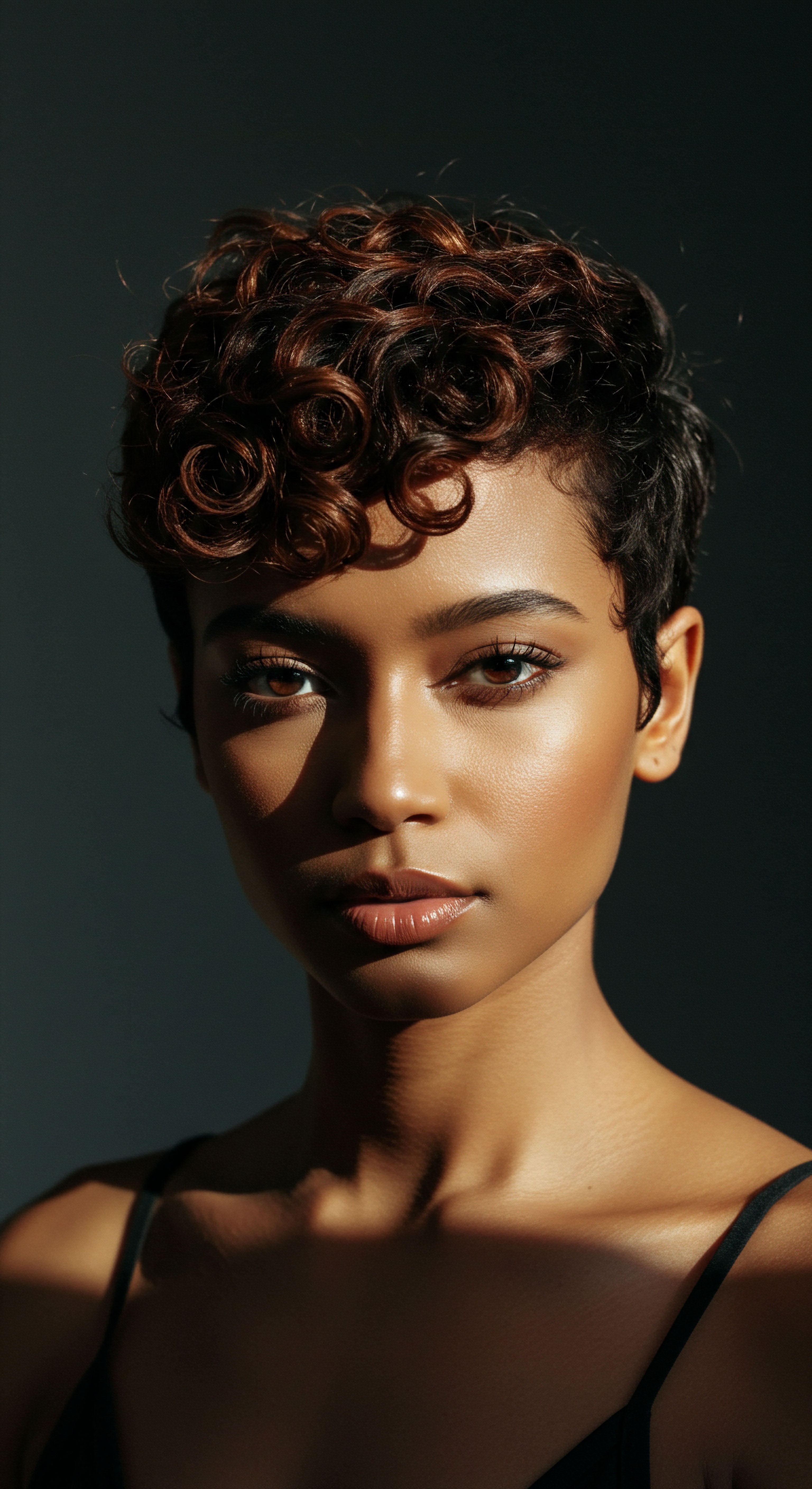
Ancient Echoes of Hair Protection
Across ancient civilizations, hair held significant cultural and social meaning. Its preservation was not merely about vanity; it often connected to identity, status, and even spiritual beliefs. Ancient Egyptians, for instance, were known for their elaborate hairstyles and their dedication to hair care. They utilized head coverings made of linen and other materials to protect their hair from the harsh desert environment, a practice that likely extended to their sleeping rituals to maintain intricate styles and shield strands from damage throughout the night.
The concept of protecting hair during periods of rest also appears in various indigenous practices. While specific documentation on sleep coverings from every ancient culture can be sparse, the widespread tradition of head wraps and protective styling suggests an inherent understanding of hair’s vulnerability. For many, hair was a direct extension of the self, a conduit for energy, or a symbol of life force, making its protection a matter of holistic well-being.
The act of covering one’s head before sleep carries ancient echoes of practicality, warmth, and hair preservation across diverse human societies.
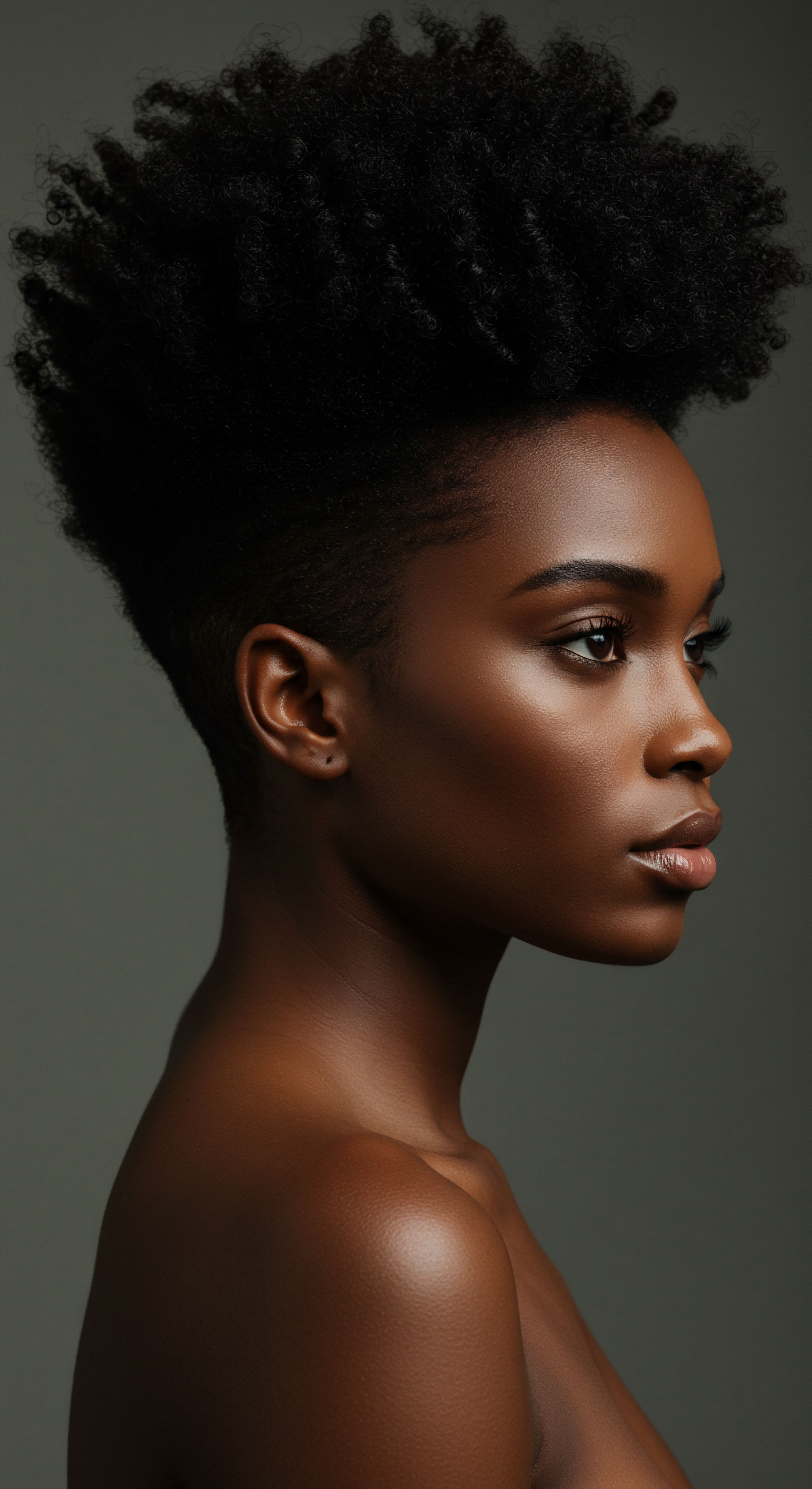
A Global Presence in Early Sleepwear
The nightcap, as a recognizable garment, appeared in various forms across different parts of the world. While the pointed, tassled nightcap often associated with European imagery emerged in the 19th century, earlier versions served similar purposes. In the Middle East, the same kaffiya worn during the day might be adjusted to provide comfort and warmth at night. In parts of Africa, head wraps, while not always shaped like the stereotypical nightcap, were also worn to shield the head from cold.
The evolution of these coverings often paralleled societal changes. For example, in 18th-century Europe, as wigs became fashionable, people would often shave or cut their hair short underneath for a better fit. When wigs were removed at night, a cap became necessary to cover the exposed head for warmth and appearance. This shows how societal norms and practical needs intertwined to shape the customs surrounding sleep headwear.
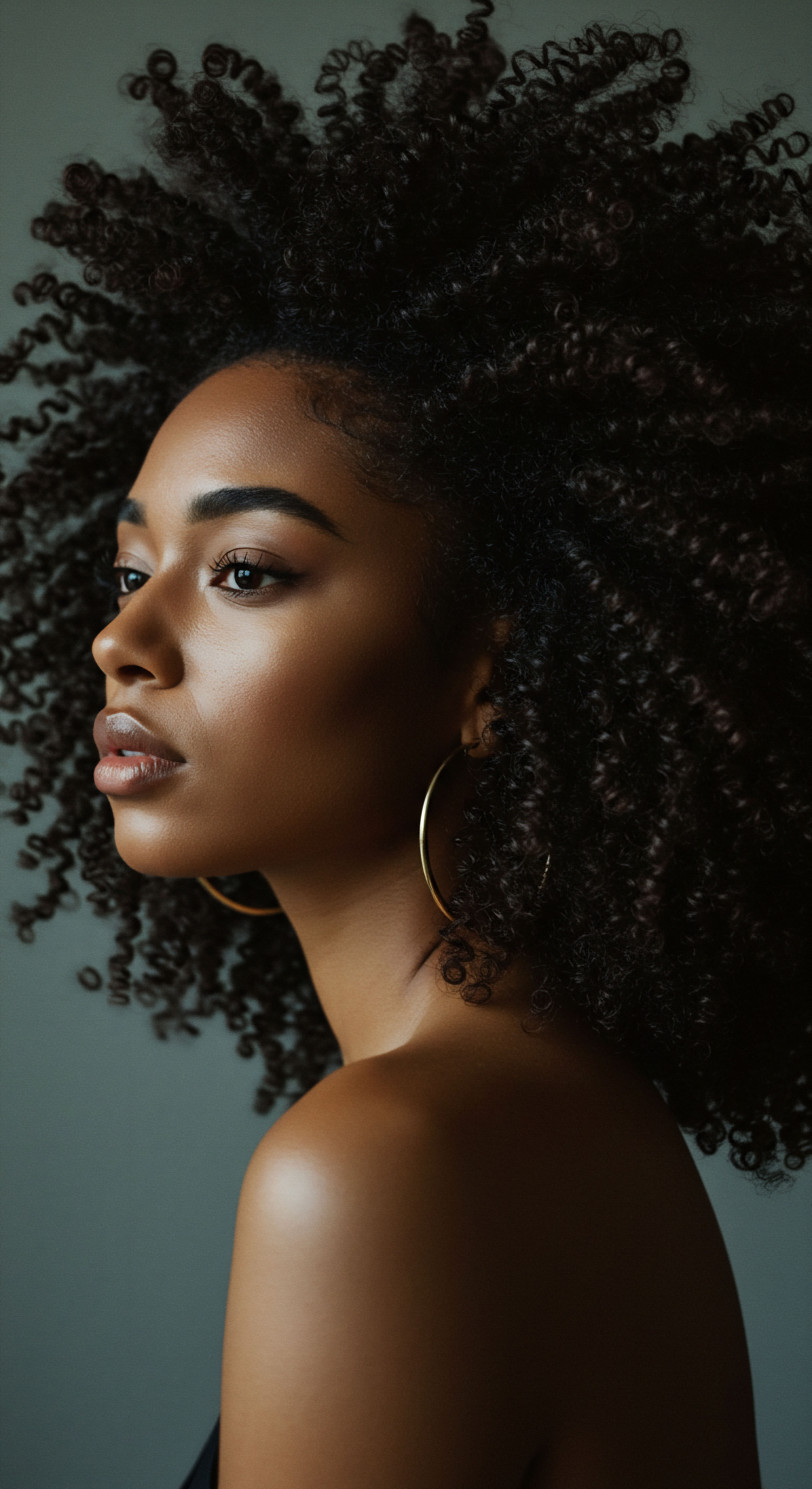
Ritual
Stepping from the foundational understanding of head coverings for sleep, we move into the realm of ritual—the conscious, repeated acts that give form and meaning to our days and nights. Here, the choice to cover one’s head before rest transforms from a simple habit into a practice steeped in intention, whether for hair health, spiritual observance, or a deep sense of personal security. This section invites a closer look at the practices themselves, how they are performed, and the practical wisdom they embody for those who honor them. We seek to understand the delicate dance between daily living and the quiet moments of preparation for rest.

Why Do Many Textured Hair Individuals Cover Their Hair for Sleep?
For individuals with textured hair, particularly those of Black and mixed-race heritage, the nighttime head covering transcends mere tradition; it becomes a fundamental aspect of hair care and self-preservation. The delicate structure of coils, curls, and waves is particularly susceptible to friction and moisture loss. Cotton pillowcases, with their absorbent fibers, can draw away essential oils and moisture from hair strands, leading to dryness, breakage, and tangles.
This understanding has passed down through generations, becoming an almost universal rite of passage within many Black communities. A bonnet, a silk scarf, or a satin-lined cap acts as a protective barrier, allowing natural oils to stay intact, strands to remain moisturized, and hairstyles to be preserved. This means less manipulation and less potential for damage, extending the life of styles that often require significant time and effort.
- Hair Preservation ❉ Protecting delicate curls and coils from friction and tangling against bedding.
- Moisture Retention ❉ Preventing natural oils from being absorbed by cotton, maintaining hydration.
- Style Longevity ❉ Extending the life of braids, twists, or other styles, reducing daily styling needs.
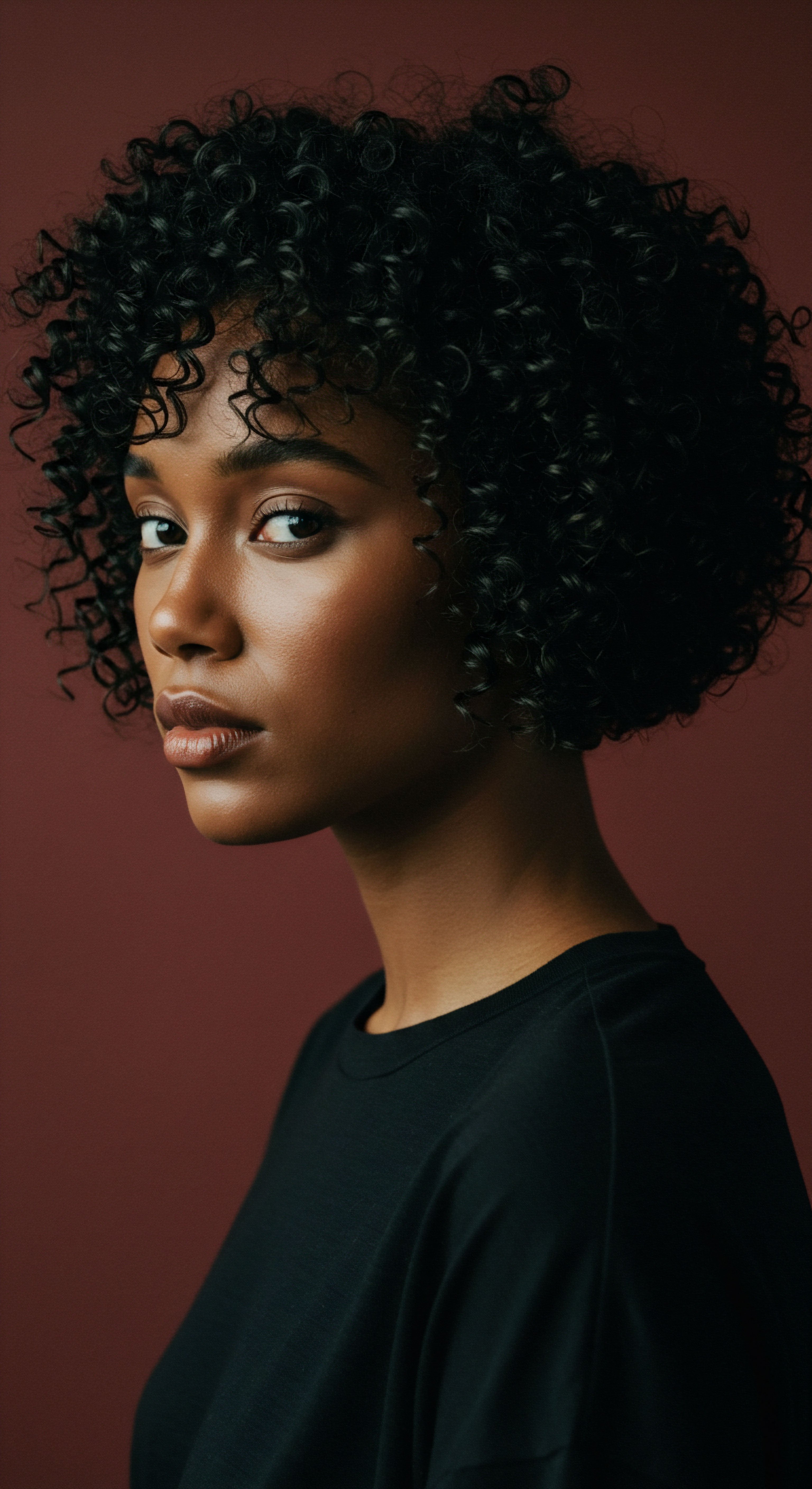
The Science Behind the Silken Shield
The choice of material for sleep coverings is not arbitrary; it is rooted in a scientific understanding of hair’s needs. Satin and silk are highly favored for their smooth surfaces, which create minimal friction against hair strands. Unlike cotton, these materials do not absorb moisture from the hair, allowing the hair’s natural oils to remain on the scalp and strands. This contributes to:
- Reduced Breakage ❉ Less friction means less pulling and tugging on individual strands, minimizing mechanical damage.
- Minimized Frizz ❉ The smooth surface helps keep the hair cuticle flat, reducing frizz and maintaining definition.
- Healthy Scalp Environment ❉ Retaining natural oils helps maintain a balanced scalp, which is vital for hair growth.
The adoption of such materials, particularly in modern times, highlights a beautiful synergy between ancestral wisdom and contemporary scientific understanding. The practice, once passed down through observation and oral tradition, now finds validation in the properties of specific fabrics.
Nighttime head coverings for textured hair are a ritual of preservation, a practical application of material science to maintain hair health and style.

A Continuum of Care
The ritual of covering hair for sleep extends beyond a simple act of protection. It represents a moment of self-care, a quiet dedication to personal well-being that begins before rest. For many, this practice connects to a deeper sense of self-worth and a celebration of natural beauty.
It is a time to prepare, to quiet the mind, and to tend to the physical crown that rests upon the head. This mindful approach to hair care often becomes a grounding force, a quiet anchor in the busy rhythm of life.
This continuous care, from daytime styling to nighttime protection, speaks to a holistic approach to textured hair. It acknowledges that hair health is not a fleeting pursuit but an ongoing conversation between our bodies, our routines, and the tools we choose to employ. The sleep covering becomes a silent partner in this conversation, working diligently through the night to safeguard the efforts of the day.
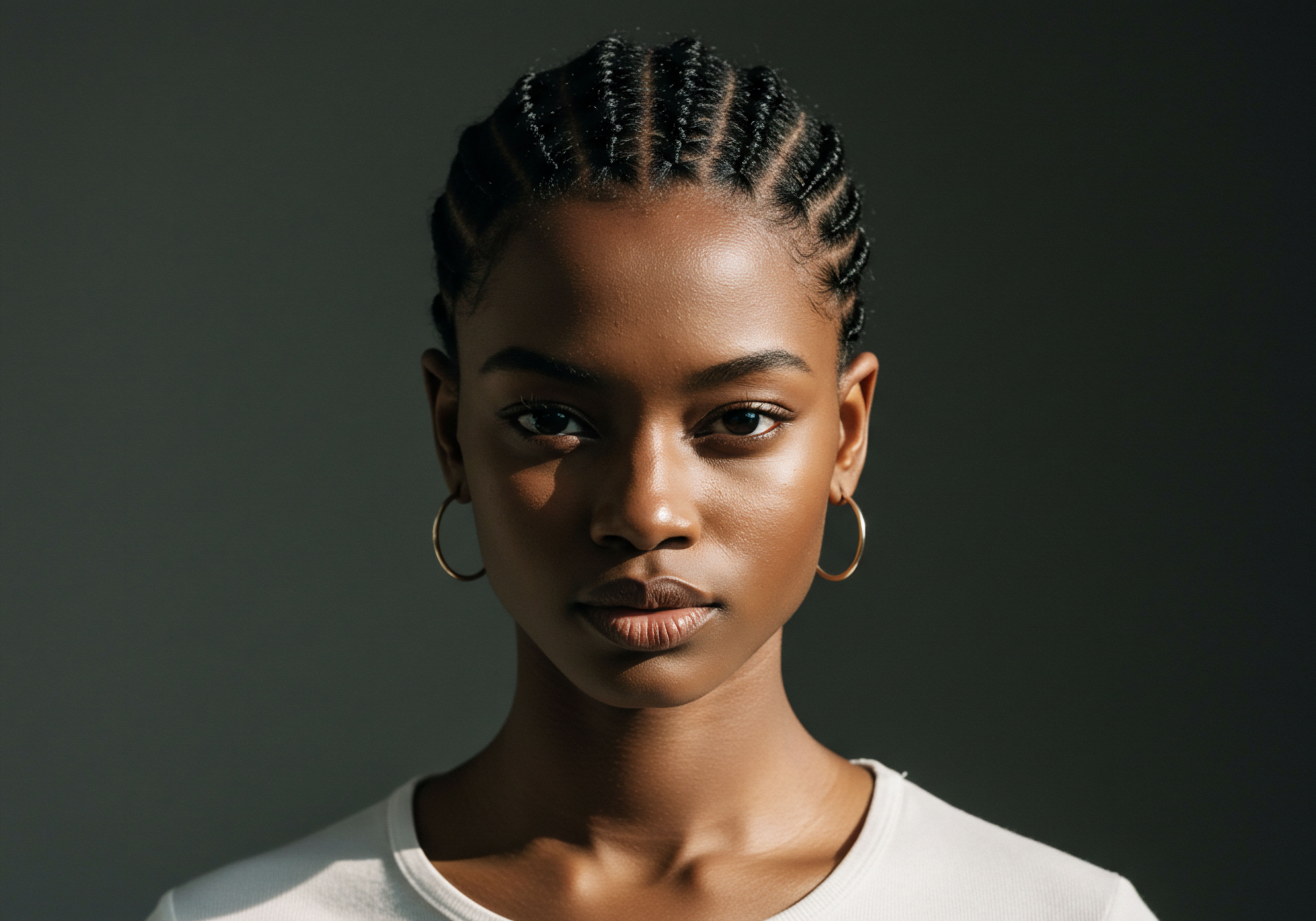
Relay
The cultural practice of wearing head coverings for sleep, seemingly a simple act, unfurls into a complex narrative when examined through the lenses of history, social dynamics, and individual well-being. We move now beyond the practicalities to a more profound understanding, exploring the layered meanings, resistances, and sometimes, the subtle psychological impacts that this tradition carries. This section aims to reveal the intricate connections that bind a personal nighttime habit to broader societal currents and deep-seated human experiences. We will delve into how these coverings have served as symbols, how they have been weaponized, and how they have ultimately been reclaimed, reflecting the enduring spirit of those who wear them.

Cultural Symbolism and Historical Context
The journey of head coverings for sleep, particularly bonnets and head wraps, is inseparable from the history of Black women. While European women in the mid-1800s wore sleep caps for warmth, and to preserve hairstyles, the story for Black women holds a different, often more profound, weight. Head wraps were traditional attire in many African regions, signifying wealth, ethnicity, marital status, and even emotional states. They were vibrant expressions of identity and culture.
However, the transatlantic slave trade brought a cruel distortion to this practice. During enslavement in the United States, head wraps and bonnets were weaponized, forced upon Black women as a means to visibly distinguish them as subservient or lesser. Laws were enacted, such as the Tignon Laws in 1786 Louisiana, which mandated that free Black women cover their hair, an attempt to diminish their beauty and social standing.
Despite these oppressive intentions, Black women ingeniously reclaimed the head covering. They transformed it into a symbol of resistance, using elaborate tying styles, beautiful fabrics, and added decorations. This act of defiance allowed them to preserve their cultural identities and assert dignity amidst dehumanizing conditions. This transformation speaks to a remarkable resilience, turning a tool of oppression into a badge of pride and a silent declaration of self.
Head coverings for sleep carry a complex history, evolving from practical needs and cultural identifiers to symbols of both oppression and powerful resistance.
| Cultural Context European (General) |
| Primary Reason for Covering Warmth, hair preservation, modesty |
| Period/Region Medieval to 19th Century |
| Cultural Context African Regions (Traditional) |
| Primary Reason for Covering Cultural identity, status, hair protection, warmth |
| Period/Region Centuries-old, pre-colonial to present |
| Cultural Context Orthodox Judaism (Men) |
| Primary Reason for Covering Reverence, religious observance |
| Period/Region Ancient to present (some even during sleep) |
| Cultural Context Enslaved Black Women (US) |
| Primary Reason for Covering Forced subjugation, later reclaimed as resistance and identity |
| Period/Region 18th-19th Century |
| Cultural Context Modern Textured Hair Care |
| Primary Reason for Covering Hair health, moisture retention, style longevity |
| Period/Region 20th Century to present |
| Cultural Context The reasons for wearing head coverings at night are varied, reflecting a blend of practical, social, and spiritual considerations. |
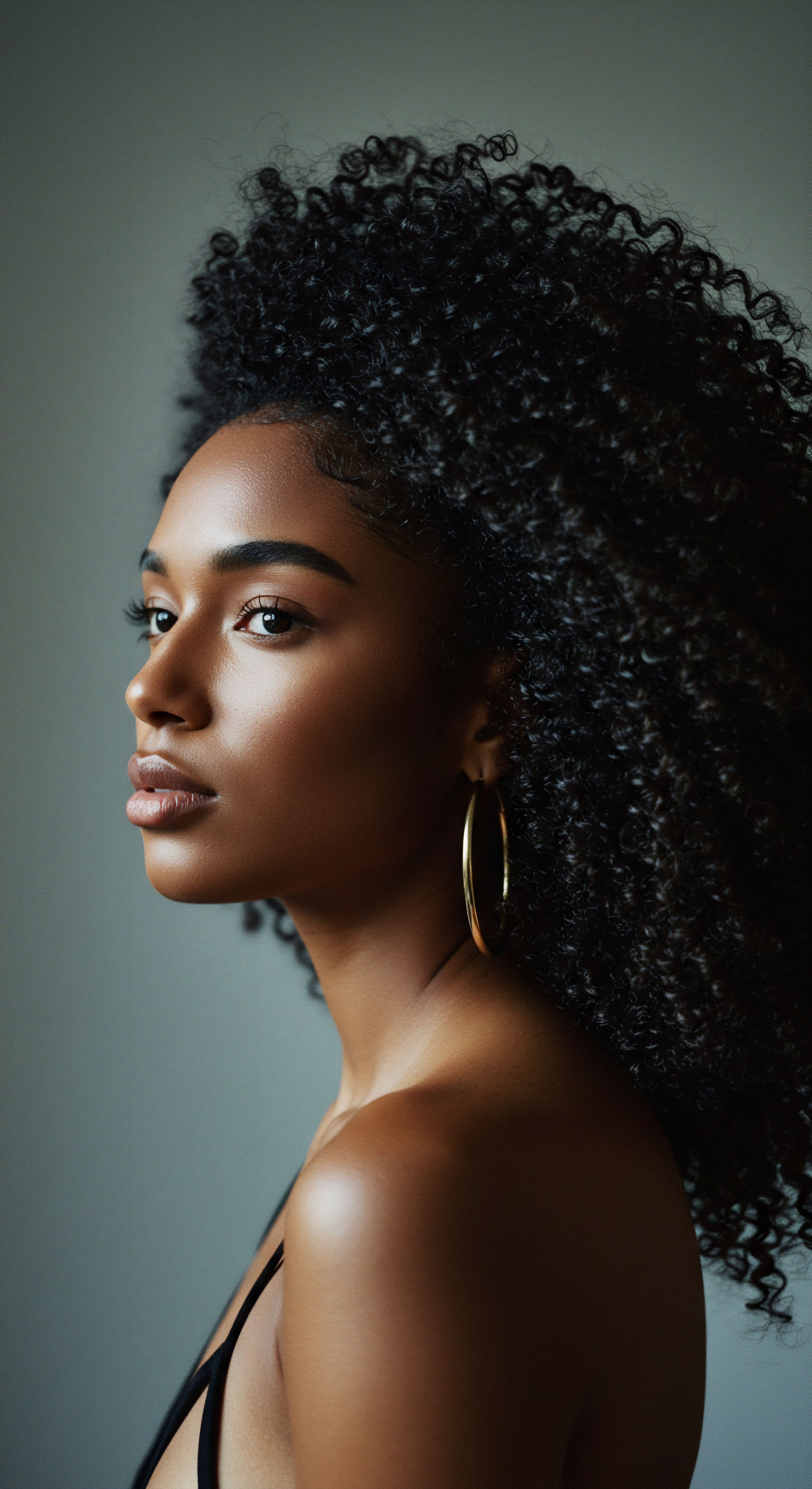
How Do Head Coverings Affect Sleep and Well-Being Beyond Hair?
Beyond their cultural and practical roles in hair care, head coverings for sleep can also hold psychological and physiological implications. For many, the act of covering the head provides a profound sense of security and comfort. This cocoon-like feeling can aid in reducing anxiety and promoting relaxation, making it easier to drift into slumber. This sensation is akin to the calming effect of weighted blankets, offering a gentle pressure that can soothe the nervous system.
However, it is vital to approach this with an understanding of potential nuances. While the comfort aspect is widely reported, some studies suggest that covering the head entirely with non-breathable materials could potentially lead to increased carbon dioxide levels and decreased oxygen. This concern prompts a careful consideration of fabric choice and ventilation.
For instance, satin or silk, known for their breathability, offer a safer option than thick, heavy blankets that might restrict airflow. The practice should always prioritize safe sleep hygiene.
A fascinating, if somewhat unsettling, study points to a potential long-term effect of sleeping with the head covered in a way that limits air circulation. Research suggests that a percentage of individuals who consistently sleep with their heads under covers may be prone to dementia, attributed to reduced oxygen flow to the brain over extended periods. One study indicates that 23% of people who sleep with their heads under covers are susceptible to dementia.
This specific data point, while not directly addressing cultural head coverings designed for hair protection, highlights the importance of adequate ventilation and material selection when considering any form of head covering during sleep. It serves as a reminder that even comforting habits require mindful application, balancing perceived benefits with potential health considerations.

Religious and Spiritual Dimensions
In some religious traditions, covering the head, even during sleep, carries significant spiritual weight. For instance, among some Orthodox Jewish men, it is customary to keep the head covered at all times, including while sleeping, as a sign of reverence for God. This practice stems from a deep-seated tradition where bareheadedness might be seen as disrespectful in sacred contexts. Similarly, in various Christian denominations and Islamic traditions, head coverings signify modesty, humility, or spiritual submission, with practices often extending into private life, though perhaps less strictly enforced during sleep itself.
The spiritual significance of hair itself also plays a part. In some African traditions, hair is considered a spiritual antenna, a connection to the divine or ancestral realm. Protecting it, even in sleep, can be seen as safeguarding one’s spiritual connection and energy. This belief system underscores that the act of covering the head is not merely about physical protection but also about preserving an intangible, yet deeply felt, spiritual link.
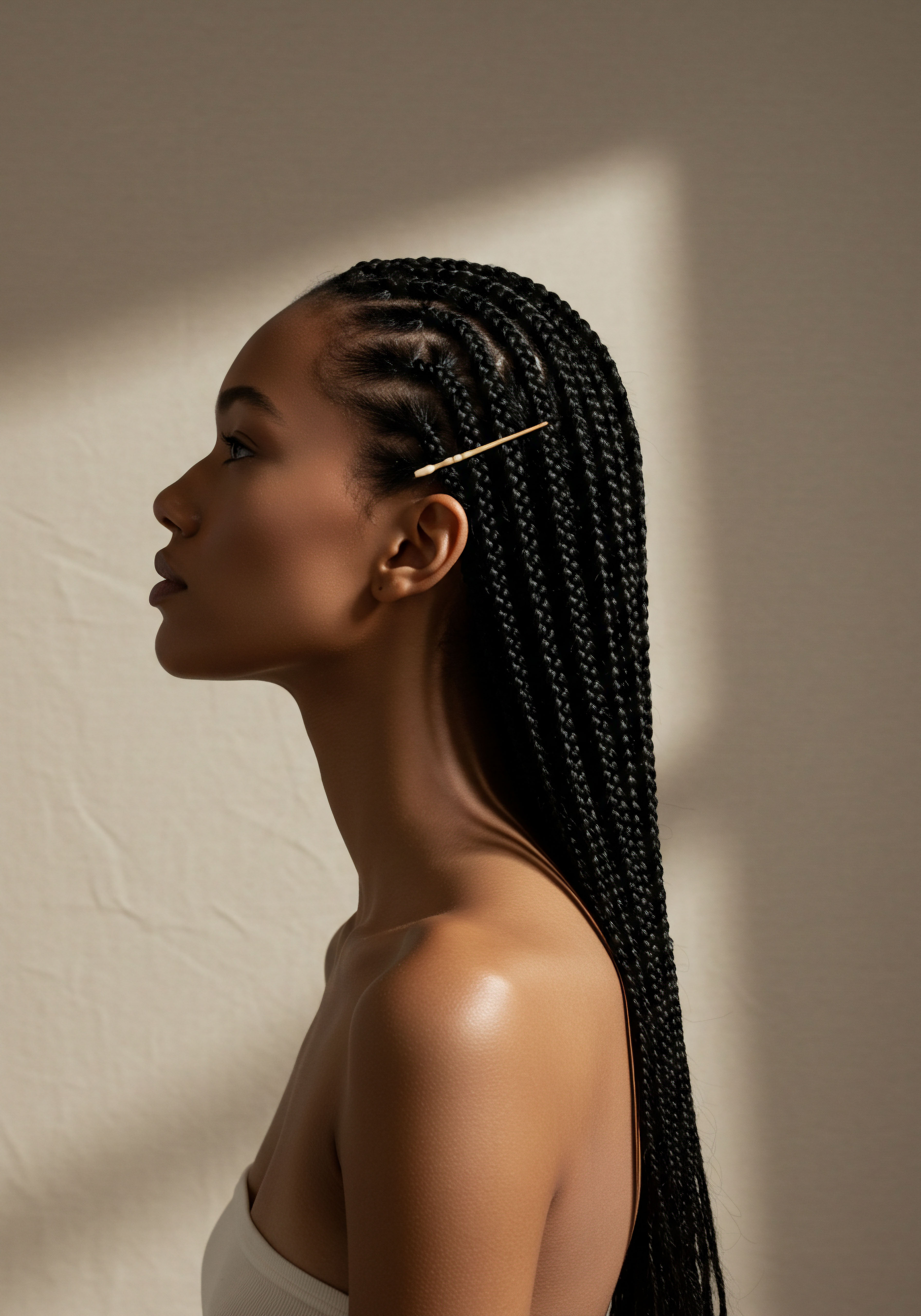
Reflection
The quiet ritual of covering one’s head for sleep, seemingly a simple act, unfolds into a rich story of human adaptation, cultural expression, and deep-seated care. From the primal need for warmth and cleanliness in ancient dwellings to the modern quest for hair health and self-preservation, this practice has transcended centuries and continents. It has been a symbol of status, a tool of oppression, and ultimately, a powerful emblem of resistance and identity. The choice to don a silk bonnet or a traditional head wrap before drifting off is a whisper of history, a gesture of self-kindness, and a testament to the enduring human desire to protect what is precious, both seen and unseen.

References
- Ball, H. L. (2002). Anthropological Perspectives on Infant Sleep ❉ Implications for SIDS Prevention. University of Durham.
- Ball, H. L. (2007). Bed-sharing and co-sleeping ❉ current evidence to inform safe infant sleep environments. Infant and Child Development, 16(5), 405-419.
- Eleyae, Grace. (2021). Interviewed in “How a Hair Wrap Routine Protects More Than Just My Hair”. Sleep.com.
- Johnson, Dayna A. (2021). Research on sleep health disparities, Emory University. Cited in “How a Hair Wrap Routine Protects More Than Just My Hair”. Sleep.com.
- Maimonides. (12th Century). Philosophical and Legal Writings on Jewish Law.
- McKenna, J. J. Mosko, S. S. & Richard, C. A. (1999). Bedsharing and Breastfeeding ❉ What Is the Relationship?. Human Nature, 10(1), 59-81.
- Mixter, Margaret. (1910). Health and Beauty Hints.
- Singletary, Jewell. (2021). Interviewed in “How a Hair Wrap Routine Protects More Than Just My Hair”. Sleep.com.
- The Holy Bible, 1 Corinthians 11:4–13.
- The Shulchan Aruch. (Late 16th Century). Code of Jewish Law.
- Volpe, L. Ball, H. L. & McKenna, J. J. (2013). Nighttime Parenting Strategies and Sleep-Related Risks to Infants. Journal of Developmental & Behavioral Pediatrics, 34(1), 1-9.